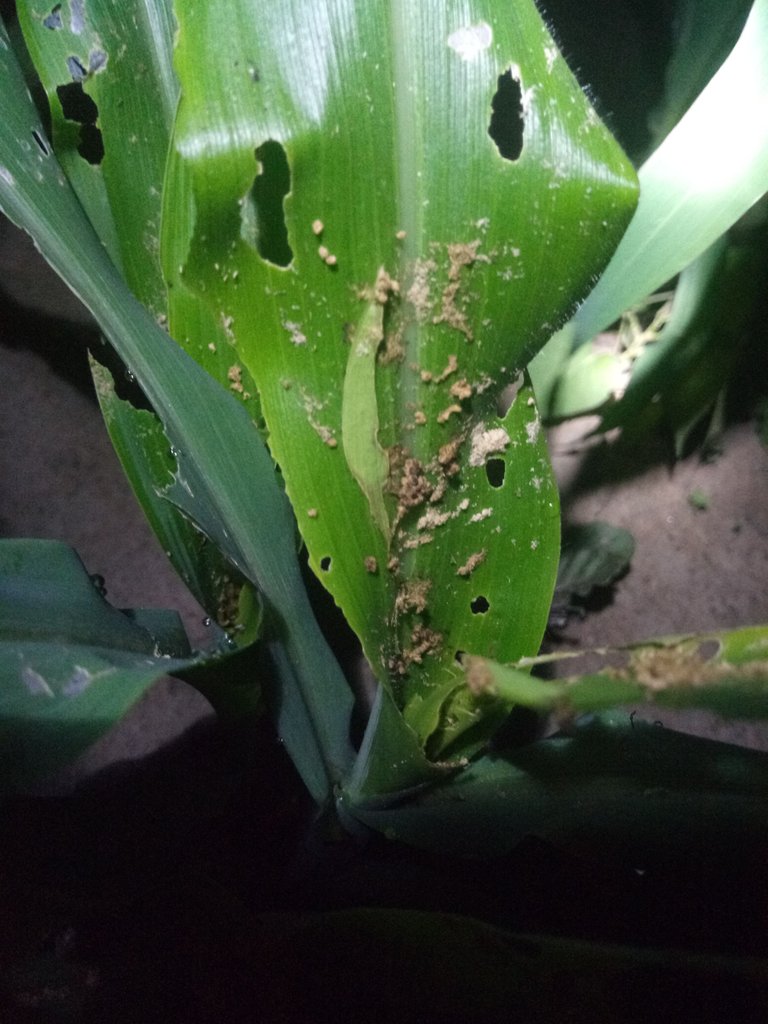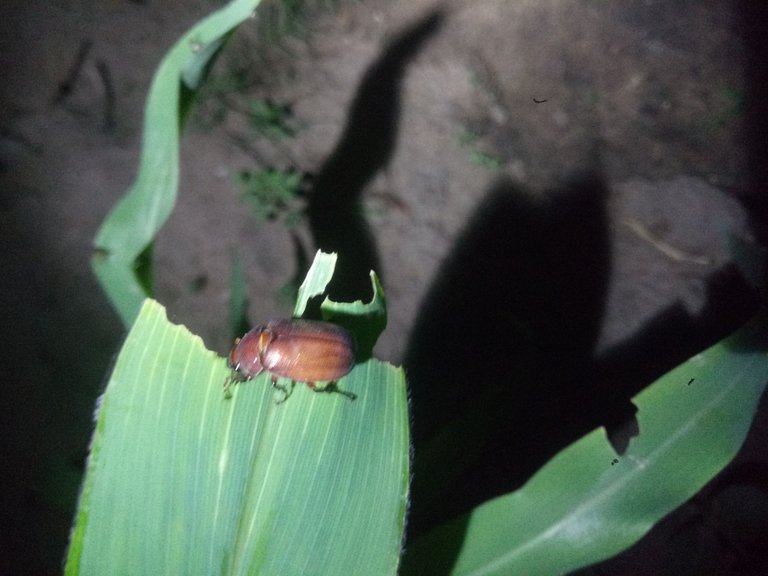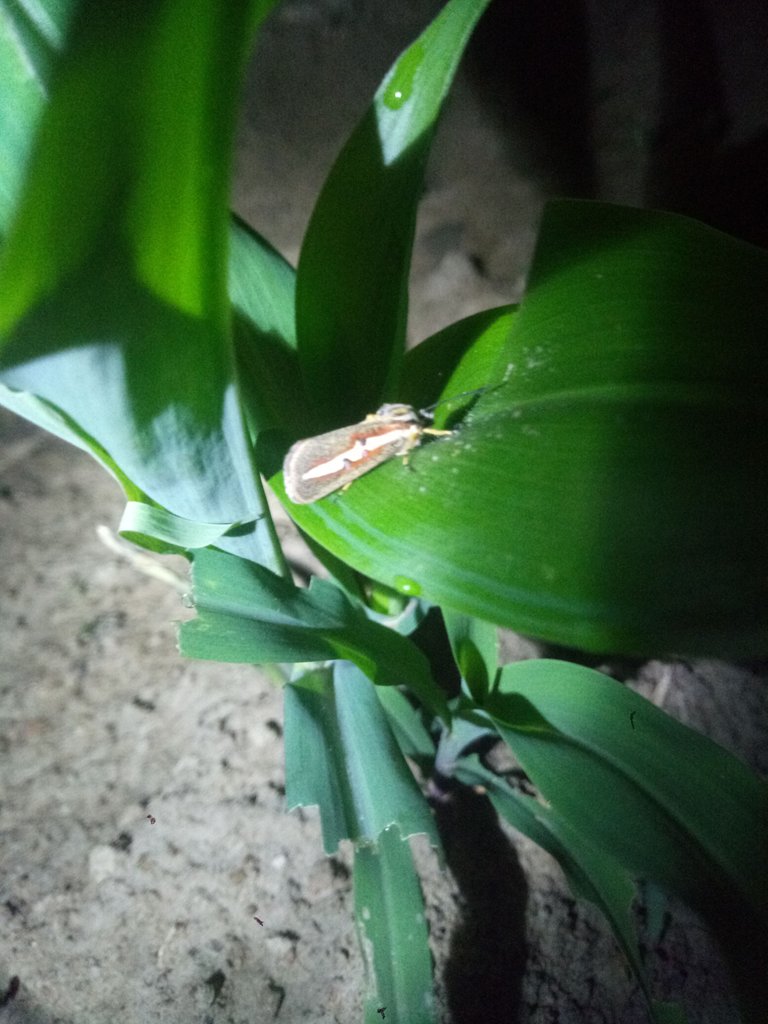
Hello agricultural lovers hope we are all doing fine,its another update on the farm activities for the MC2022,last week I talked about some pest invading my maize 🌽 farm and I have applied the first technique I know to battle this insect eating up the maize 🌽


, the first technique was the weeding making sure the farm surroundings is neat but despite this the insect keep eating up the maize, this situation was not pleasant at all I have to think of another solution to it,but before any solution I have to be sure of the kind of insect eating the maize and this is the reason for my visit to the farm this night 🌚 with my torch 🔦 to no when those insect is perpetuating the evil, on getting there I discover there are Several kinds of insects eating the maize 🌽 leaf 🍃 at the same time
This concept has really helped me in finding a solution to the pest invasion, it was indeed a pest invasion, I saw Several insect on the maize leaf 🍃, caterpillar,

Scarab Beetle, large brown beetle - Phyllophaga, and my reserch has lead me to this
Source
(Classification
Species category: Beetles & Weevils
Scientific name: Heteronychus arator
Description
An adult is long, cylindrical with a shiny black/chestnut brown exterior; it typically reaches 15-25mm in length. The abdomen is covered by its front wings that form a hard protective shell.
The larvae look similar to other white ‘curl grubs’ but will have a brown swollen abdomen from their soil and plant based diet.
An African native, it can now be found all across Australia but is most prevalent in Western and Southern Australia.
The larvae are soil dwellers but the adult also spends time below ground, tunnelling frequently and disrupting the soil, often creating small soil mounds. They can also be found just above soil level.
Behaviour
Beetles are often found in the soil prior to planting and easily identified in a soil sample. These insects can fly and are attracted to lights. They have been known to take mass flights in autumn.
As larvae they burrow into the soil and feed on the roots, going a little deeper underground during the 2nd and 3rd instar phases where they often cause the most damage to turf by cutting off the growing point. Adults will emerge in mid-summer to autumn.
Risks
Larvae occur from early spring to mid-summer and cause significant damage to turf roots. Older grasses may be hardy enough to survive an infestation but will be weakened. New shoots struggle; they can brown off and die as the insect reduces their ability to soak up moisture and nutrients.
Adults are constantly tunnelling and the mounds they create greatly disrupt playing surfaces.)
I also discover another insect,

Source
( White Timber Moth II - Xylorycta sp.
Family Xyloryctidae
This page contains information and pictures about White Timber Moths that we found in the Brisbane area, Queensland, Australia.
The larvae of Xylorycta sp. are either live in tunnel in stem of host plants while collect and feed on leaves during the night, or live in tubular silk shelters amongst foliage. They are related with Banksia or Hakea)

Source
Chlorophorus annularis: is a species of beetle in the family
Scientific classificationedit
Kingdom: Animalia
Phylum: Arthropoda
Class: Insecta
Order : Coleoptera
Family: Cerambycidae
Genus : Chlorophorus
Species : C. annularis
View or trade
BEER.Hey @tobywalter, here is a little bit of
BEERfrom @pixresteemer for you. Enjoy it!Learn how to earn FREE BEER each day by staking your
BEER.